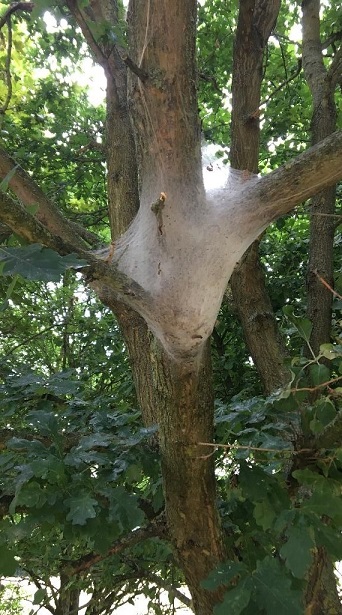Summary
Management of oak processionary moth (OPM) is becoming an increasing challenge to land managers of trees and woodlands in urban and rural areas as the pest continues to spread outwards from original infestation sites in London. This work looks at how landowners and other managers of trees are responding to the challenge, their attitudes and behaviours towards OPM, and how policy can support improved future management of the different social and ecological risks posed by the pest. A wide range of methods were used including interviews, focus groups, surveys and participatory mapping of stakeholders
Research Objectives
- Understand how the different risks and impacts posed by OPM, e.g. tree health, biodiversity, public and occupational health, and financial risks are perceived by stakeholders
- Understand the factors influencing stakeholder decision-making around the management and control of OPM
- Understand the feasibility and implications of adopting a risk-based approach to management of OPM (risk-based approaches are where decisions about management are based on assessments of the risks posed by OPM in a given setting)
- Understand current approaches to risk-based management at site and area level, and any barriers to implementation experienced by stakeholders
- Provide evidence to policymakers to inform the development of support for land managers

Results
The main findings from the research to date have shown that:
- A range of different risks influence stakeholder decision-making, but for many land managers one of the main drivers of action to manage OPM is the perceived risk to public health
- Many managers of trees and woodland are already implementing a risk-based approach to management of OPM
- A full range of management methods is being employed including spraying with pesticides and biological control, caterpillar nest removal, exclusion zoning and signage, the application of different methods are assessed by stakeholders in terms of risk trade-offs
- Local authorities have different types of strategic responses to OPM depending on the perceived levels of corporate and financial risk connected with the numbers and location of oak trees across their areas of responsibility
- The level of awareness and understanding of OPM amongst private residents and members of the public is generally low. The costs of OPM management for residents is a major barrier to action
- Although oak trees are a culturally valued species, there are fears that the risks and costs of OPM management may prompt felling of oak trees, even though many stakeholders assert this is only an option of last resort
Outputs
Since 2017 this research has covered the following topics:
2017/2018 – Understanding land manager risk perception and behaviours for future management of OPM
2018/2019 – Understanding the tactical and strategic approaches to future OPM management
2019/2020 – Testing site-based approaches to future OPM management and the guidance required for strategic planning for OPM; understanding the needs of residents and arboricultural contractors (in progress)
General Content
Publications
Marzano, M., Ambrose-Oji, B., Hall, C. and Moseley, D., 2020. Pests in the city: Managing Public Health Risks and Social Values in Response to Oak Processionary Moth (Thaumetopoea processionea) in the United Kingdom. Forests, 11(2) p.199
Funding & Partners
-
 Forestry Commission (OPMCP)
Forestry Commission (OPMCP) -
 The Tree Council
The Tree Council -
 This research project is funded by Defra
This research project is funded by Defra
